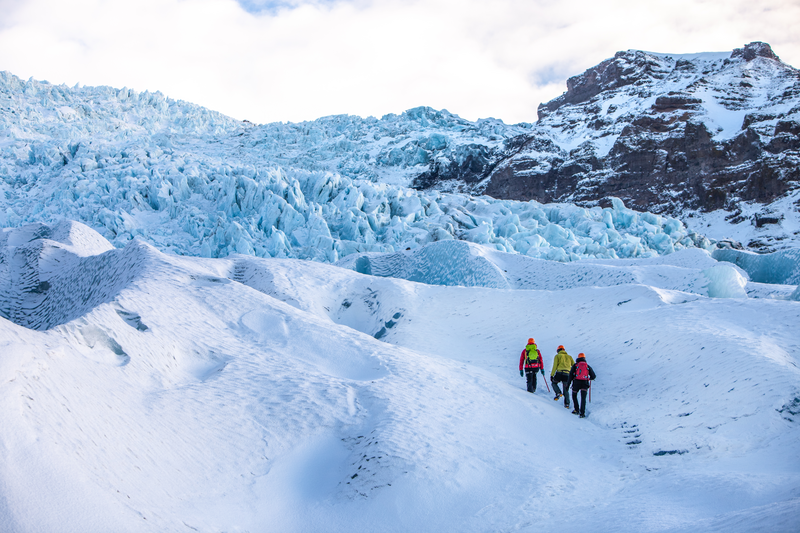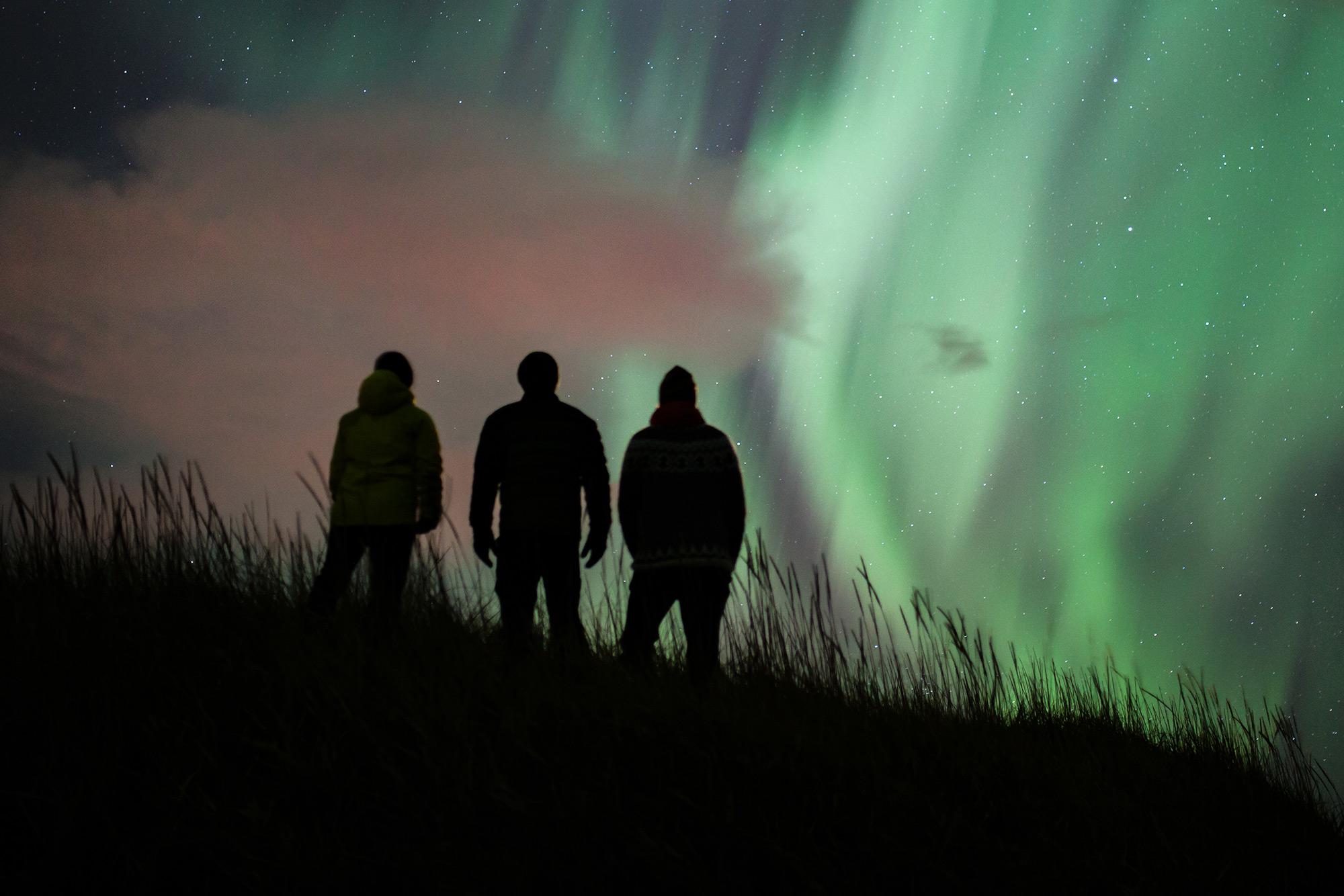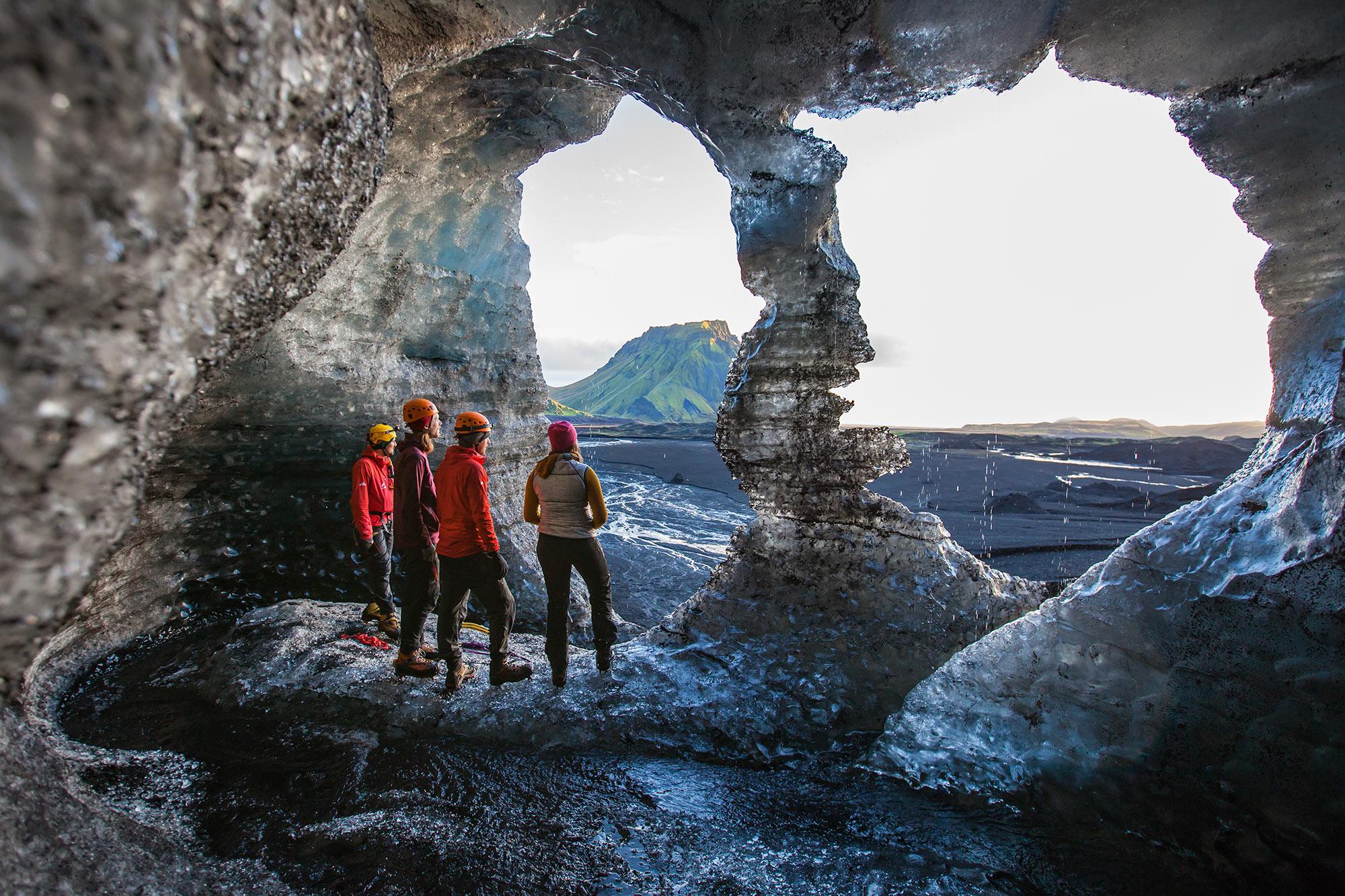The Secrets of the Crystal Ice Cave in Iceland
| Ice Caves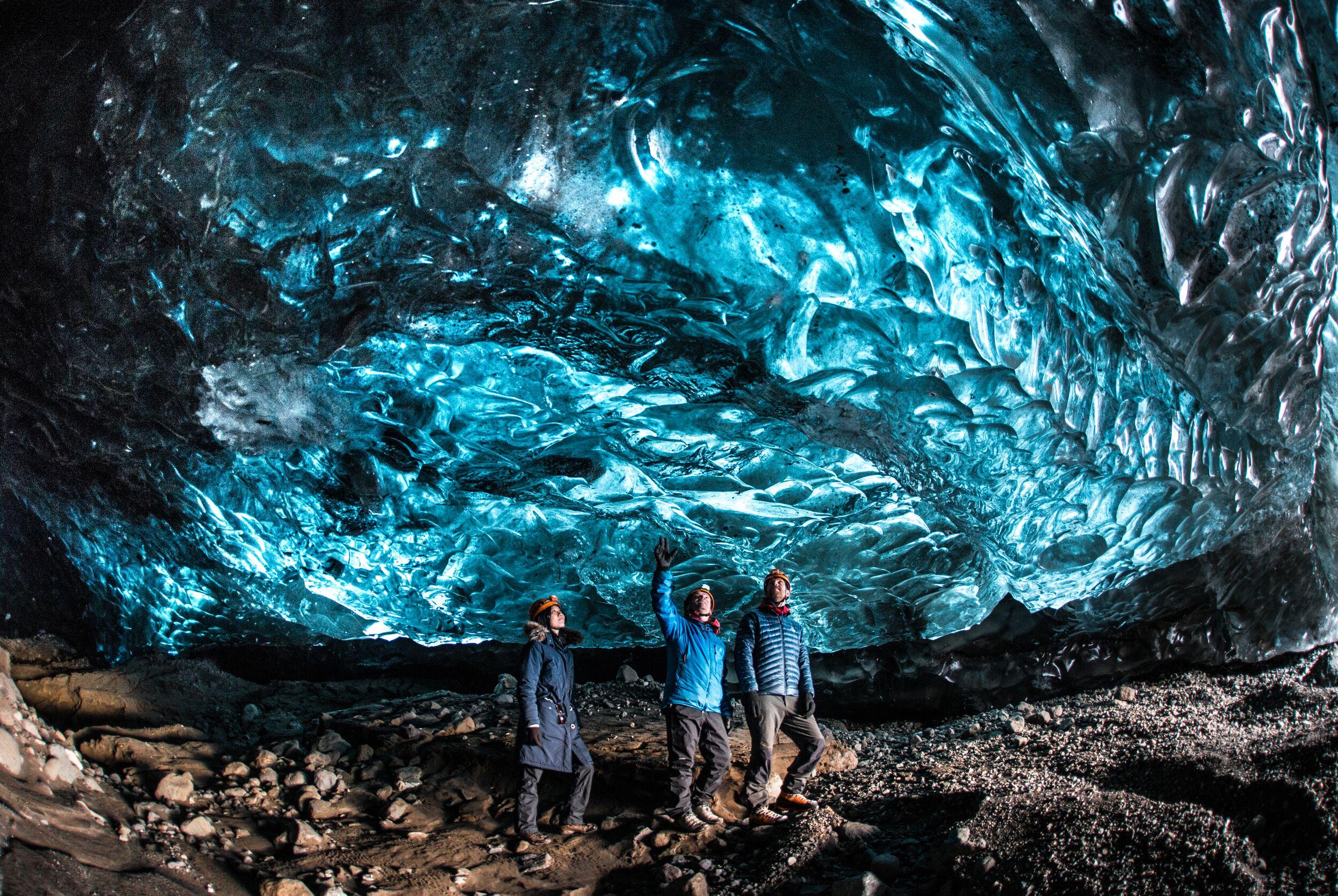
Iceland's ice caves, particularly the crystal blue ice caves, offer a unique and mesmerizing experience for visitors. These natural wonders, formed over centuries, showcase the dynamic interplay of snow, ice, and light. As we delve into the mysteries of these glacial phenomena, discover their unique beauty and the fascinating process behind their formation.
What Are Crystal Ice Caves, and How Do They Form?
Iceland's glaciers are not only iconic symbols of the country's natural heritage but also the home of one of its most mesmerizing phenomena: the crystal ice caves. These magnificent structures, hidden within the heart of vast and majestic glaciers, are the product of a slow and powerful journey that begins with the falling of snow.
Over the span of centuries, the accumulation of snow undergoes a remarkable transformation. Each layer of snow that settles on the glacier exerts pressure on the layers beneath it. As more snow accumulates, the pressure increases, compacting the snowflakes into firn, an intermediate state between snow and glacial ice. This process continues, squeezing out air bubbles and densifying the structure until the firn turns into solid, dense ice.
It's this intense compression over time that gives glacial ice its extraordinary clarity. With fewer air bubbles to obscure its transparency, the ice can range from crystalline to a deep, enchanting blue. This blue hue is nature's artistry at work; it occurs because glacial ice absorbs the longer red wavelengths of light while scattering the shorter blue wavelengths.
The result is a surreal, azure world beneath the surface, where the light filters through the ice to create an ethereal glow that seems to pulse with the life of the glacier itself.
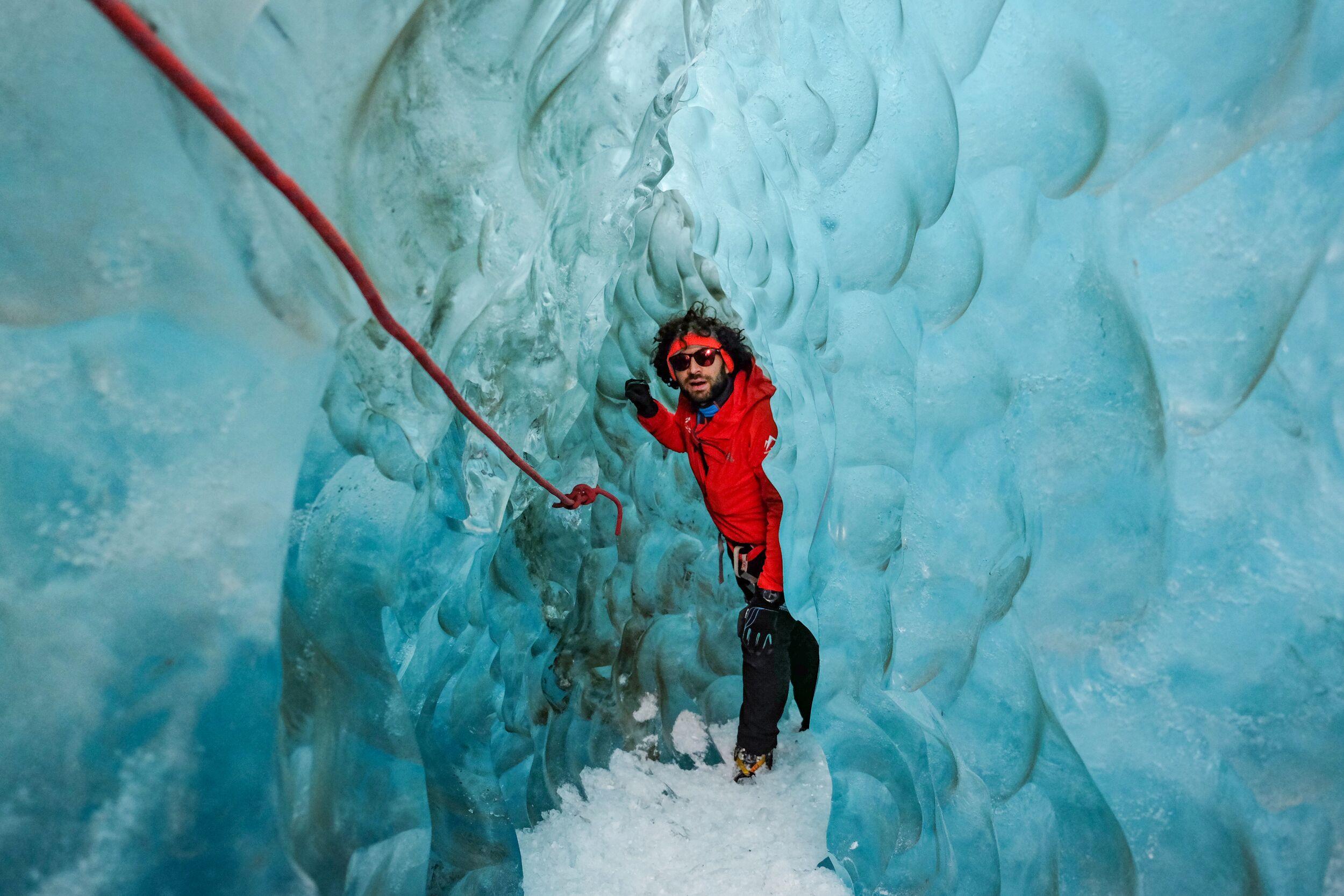
Inside a glacial ice cave
Ice caves are formed through the action of meltwater. During warmer periods, the surface ice melts, and water flows downwards, carving intricate paths through the glacier. This creates stunning caverns and tunnels, each unique in their formation. The glacial ice's density and few air bubbles contribute to its transparency, enhancing the cave's beauty with shades of blue and white.
Iceland's ice caves are as diverse as they are stunning, each with unique characteristics influenced by their formation, location, and the seasons. Some ice caves are made of ice that contains more air bubbles, resulting in less transparent, whiter ice. Others display layers of volcanic ash, a testament to Iceland's volcanic activity. The crystal blue ice caves are particularly striking, showcasing the deep, clear blue hues of dense glacial ice.
Within these ice caves, the sense of timelessness is palpable. The ice here is a living history book, with each layer telling a story of winters past. The glaciers from which these caves are carved are dynamic and constantly changing, reshaped by the very forces that created them: temperature, time, and the relentless gravity that draws the glacier slowly down the mountainside.
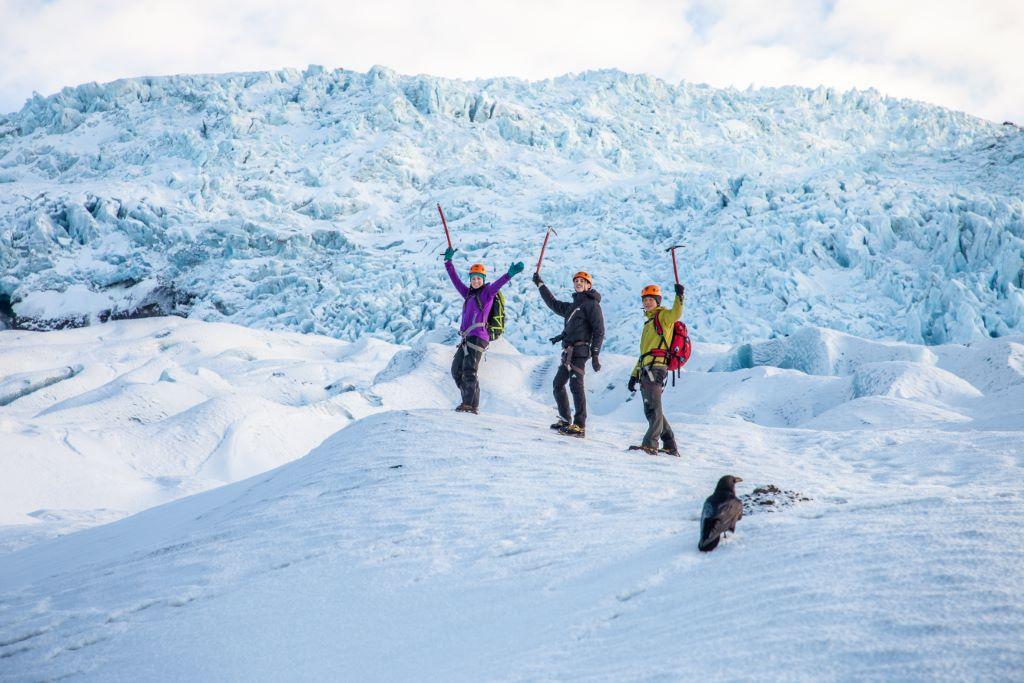
The Ultimate Guide to Glaciers and Glacier Hikes in Iceland
11% of Iceland is covered in glaciers, making it a top destination not only for ice caving but also for glacier hikes. Read our ultimate guide and learn more about glaciers: how they are formed, why they are blue, and how you can explore them safely.
How Crystal Ice Caves Change Throughout the Seasons
In winter, they are more stable, revealing beautiful ice formations that continually evolve. Cold weather hardens and contracts the ice, while warmer conditions slightly melt the surface snow and ice. This interplay leads to a dynamic environment where the caves change, sometimes even on a weekly basis.
As Heraclitus famously said, "No man ever steps in the same river twice," and similarly, one never steps into the same ice cave twice, as glaciers are themselves slow-moving rivers of ice.
In summer, some ice caves may collapse or become unsafe, while new ones form through the movement of glacial waters. While some more robust ice caves in Iceland remain stable during the summer months and are safe to visit, summer is generally not considered the best season for exploring ice caves. The optimal time for ice cave exploration is typically during the colder months when more caves are accessible.
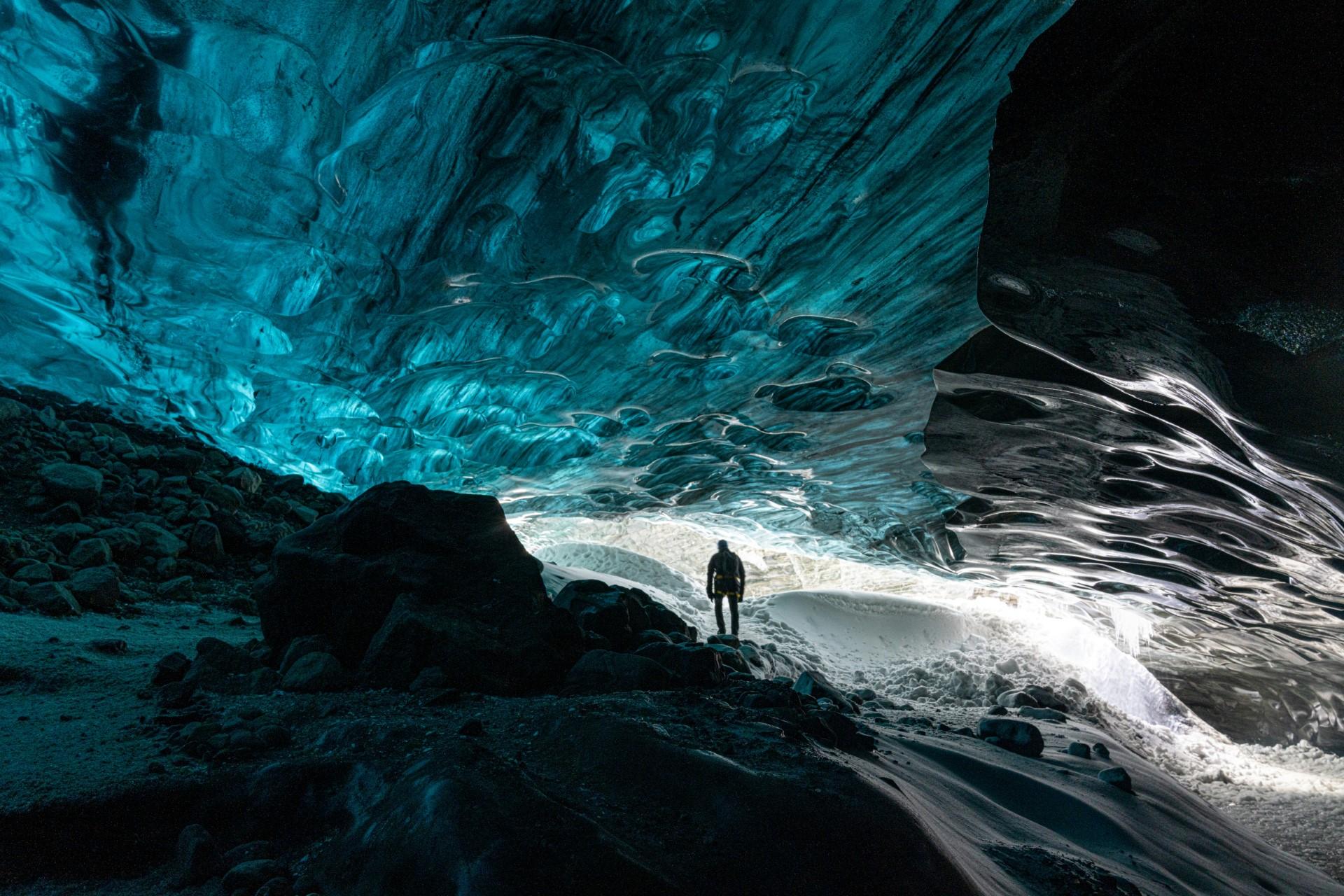
As the air chills in Autumn and the days grow shorter, the meltwater that streams through the glacier's crevasses during the warm months starts to slow, eventually freezing completely. This cyclical process is not just a natural phenomenon; it signals the beginning of a thrilling period for those who make their living from the ice.
Our glacier guides, seasoned in the ways of these icy giants, await this time with anticipation. As the ice stabilizes and tunnels within the glaciers become safe to traverse, these guides set out on private expeditions, trekking across the frozen expanses in search of the untouched beauty that lies within. It is a quest that requires skill, patience, and a deep understanding of the ever-shifting terrain.
Each guide hopes to uncover a cave that stands out for its beauty, size, or the unique formations within. When one is found, the finder has the honour of naming it. These names might reflect the cave's distinctive features, the emotions it evokes, or even be a nod to Icelandic mythology and lore.
Once a new ice cave is discovered in Iceland, a team of experts conduct a thorough safety inspection and monitor its stability over time. Only after careful study and the establishment of secure access routes do professionals declare it safe for tourists, ensuring both visitor safety and environmental preservation.
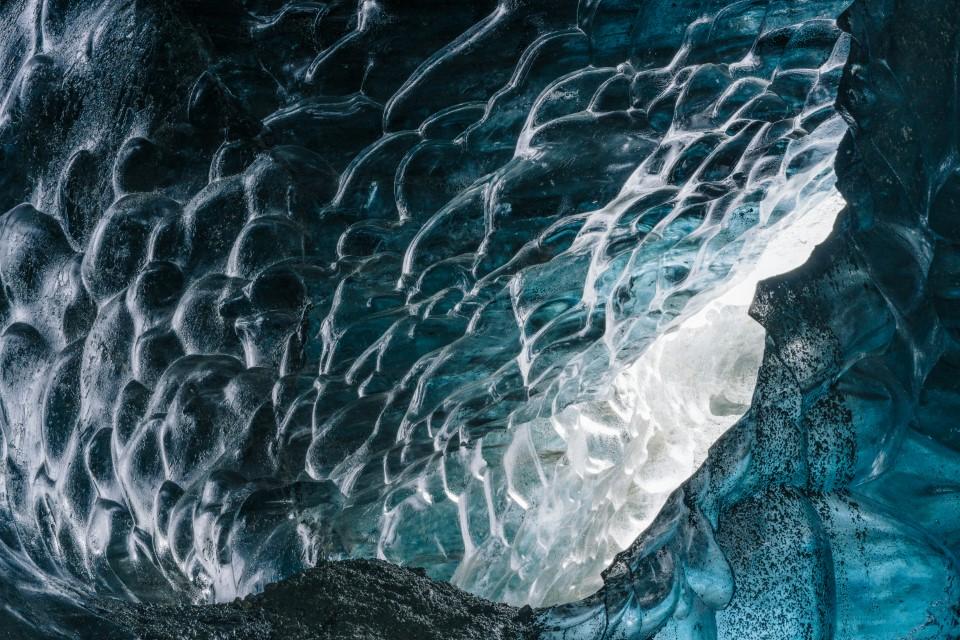
Visiting a Crystal Blue Ice Cave In Iceland: What to Expect
Visiting a crystal ice cave in Iceland is an absolute must-do but also an adventure that requires careful planning and consideration. One cannot simply wander onto a glacier; the terrain is treacherous, with hidden crevasses and unstable ice that demand respect and expertise. That's why booking an ice cave tour with seasoned guides is not just recommended; it's essential.
These tours provide the necessary equipment, from crampons for grip to helmets for safety and the expert navigation required to traverse the glacier's surface safely. The journey to the ice caves often involves travelling in a modified glacier vehicle capable of handling the rugged glacial terrain or embarking on a guided hike, which can be a thrilling experience in itself.
Once at the mouth of an ice cave, the entrance can vary in size: it may appear as a mere slit in the glacier or an arching gateway to another world. As you step across the threshold, the atmosphere changes. Inside, the cave unfolds in a display of nature's wonder — where air, water, and temperature work together to sculpt ice into stunning formations.
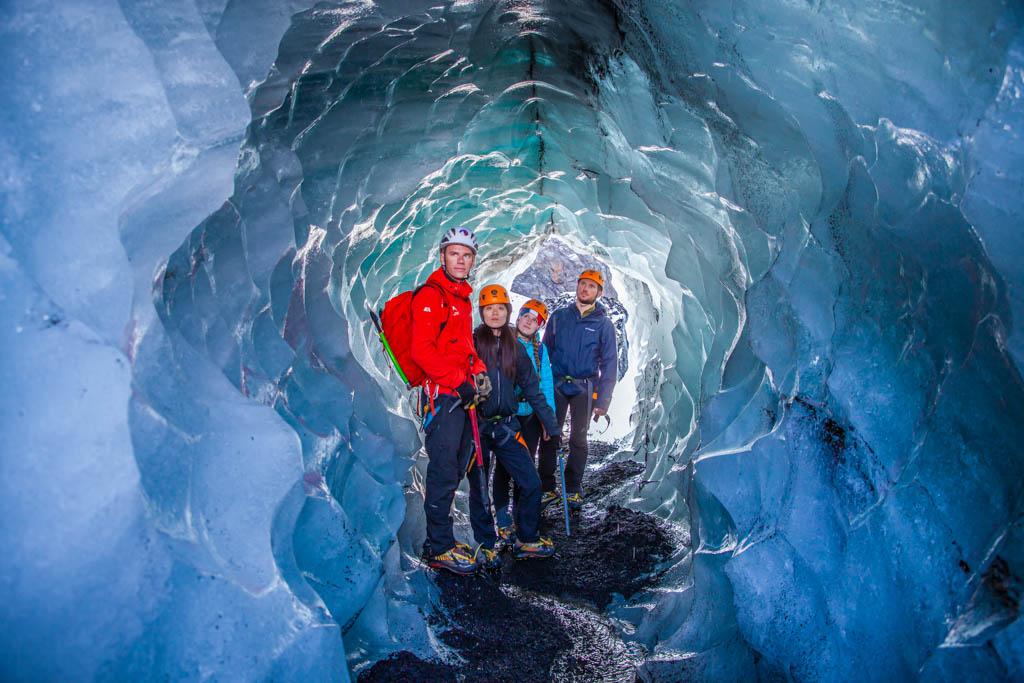
Peeking into an ice cave
The walls within might be polished to a glassy sheen, reflecting hues of deep cobalt and turquoise. These colors dance and flicker as daylight seeps through the ice, painting the cave with an ethereal light. In other places, the ice takes on a frosted appearance, its surface dotted with bubbles trapped long ago, telling tales of frozen time. Volcanic ash from past eruptions may form stark, beautiful layers, a reminder of the island's fiery heartbeat.
The silence in an ice cave can be profound. The outside world fades away, leaving only the intimate sounds of the cave itself — the occasional crackling whisper of shifting ice, the soft drip of water melting slowly in the muted light. It's a place that commands a hushed reverence, inviting visitors to listen, observe, and reflect.
Each cave is unique, shaped by the specific conditions that created it, making every visit a once-in-a-lifetime experience. Some caves might feature towering ice formations that resemble frozen waterfalls, while others house delicate structures that defy gravity. Walking through these frozen corridors, one cannot help but feel a sense of wonder and appreciation for the raw and dynamic nature of Iceland's glacial landscapes.
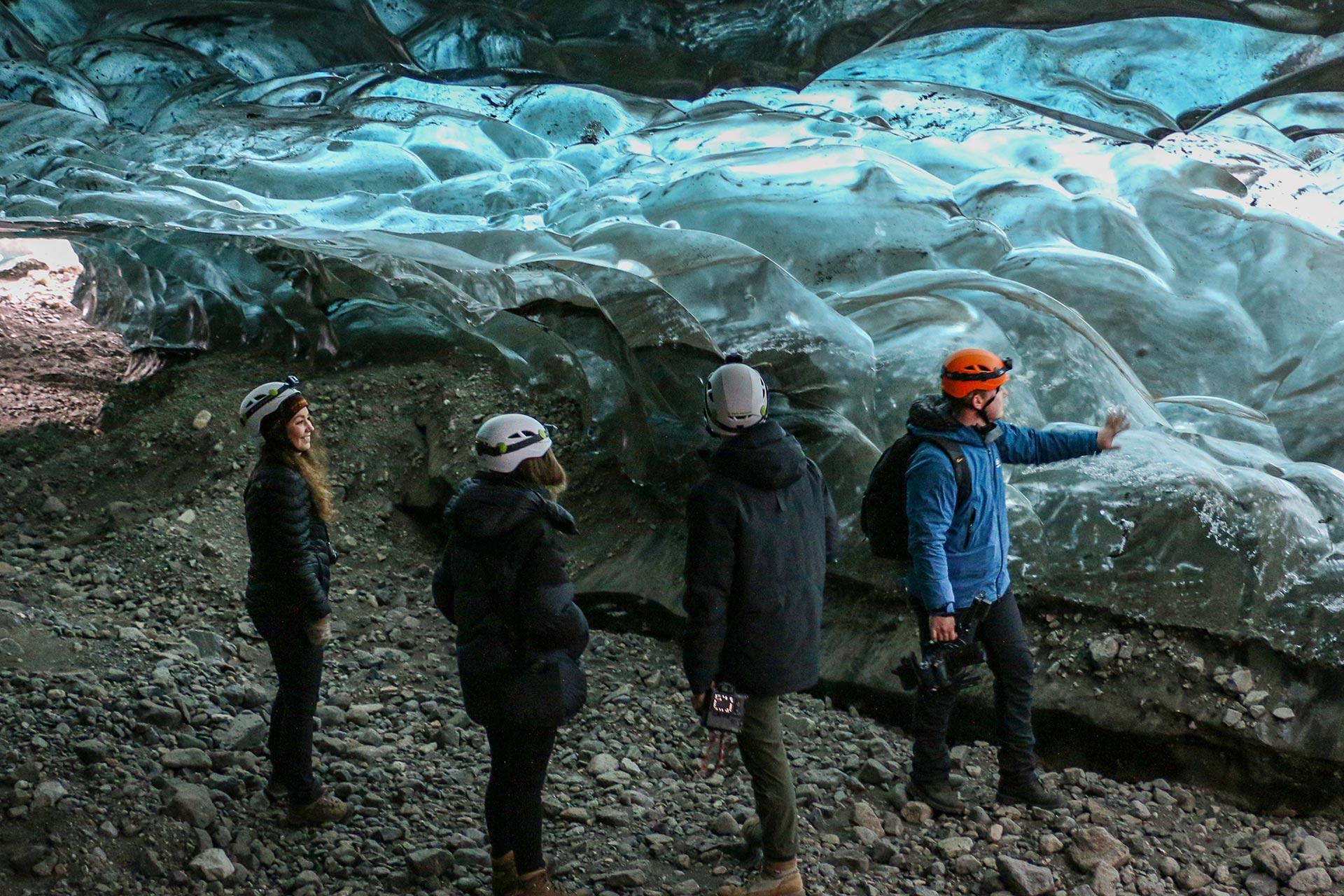
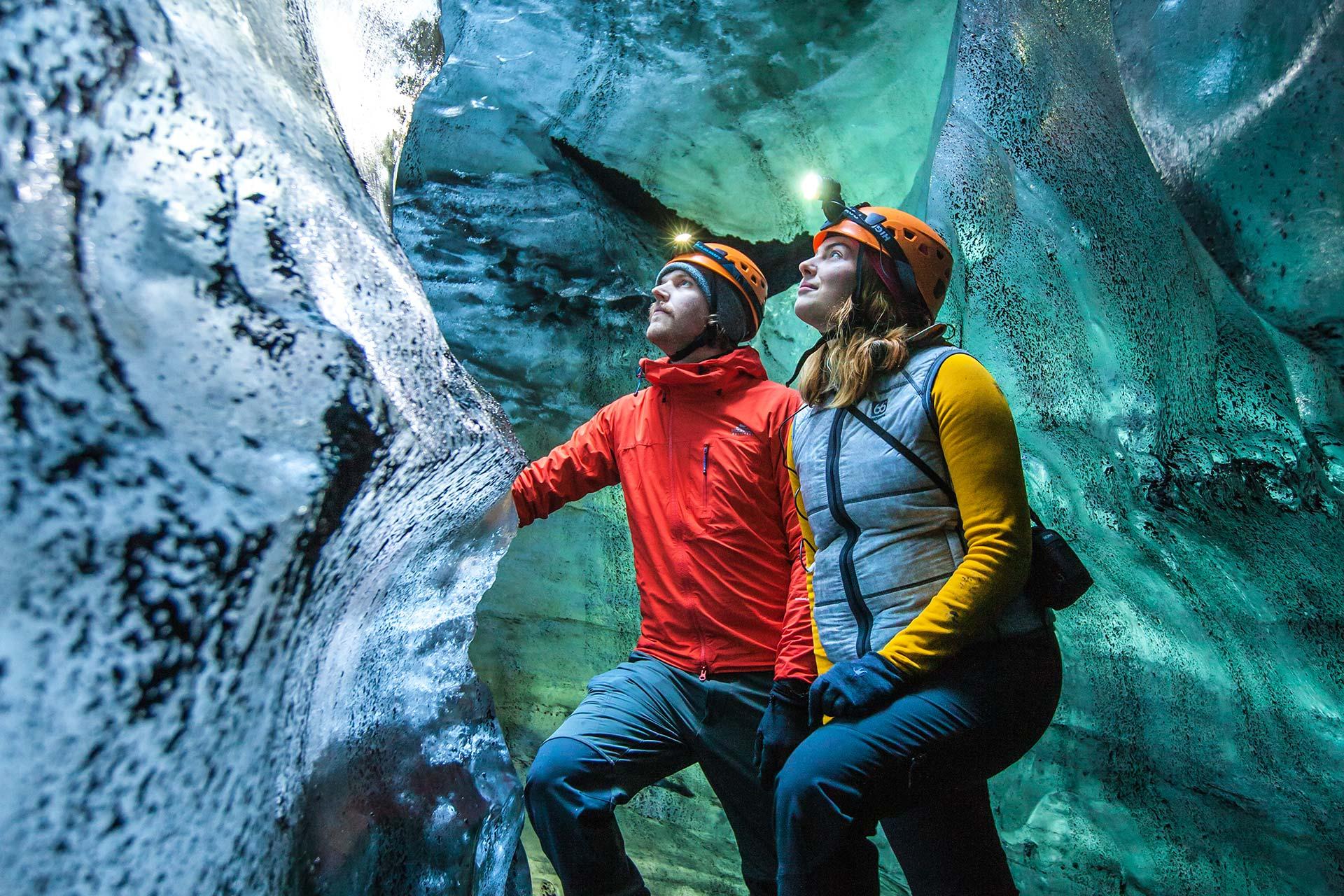

Are Iceland’s Ice Caves and Glaciers melting?
Yes, they are. The rapid melting of Iceland's glaciers profoundly impacts the formation and evolution of its ice caves, and their accessibility is under significant threat. As glaciers retreat dramatically each year, they leave behind barren landscapes and rugged, hardly accessible terrains, where it will take a long time for any vegetation to take root.
This situation underscores the importance of preserving these natural formations. Protecting Iceland's glaciers and their ice caves is vital not only for upholding the country's unique cultural heritage but also for furthering scientific understanding of glacial behaviour in an era of climate change, ensuring that future generations can appreciate these majestic wonders.
Iceland's crystal ice caves are a vivid reminder of our changing planet, offering both awe-inspiring beauty and a poignant message about the importance of environmental preservation. Glaciers are also crucial symbols of our planet's health. We find ourselves in a prime position to still admire and safely visit these glacial marvels, a rare opportunity to connect with the soul of Iceland and the marvels of nature.
Let us seize this chance to witness these magnificent formations, embracing their beauty and the urgent call to protect them for future generations. As these glaciers and their caves face the challenges of climate change, our role in their preservation becomes ever more vital.
Visit a Crystal Ice Cave in Iceland with Icelandic Mountain Guides!
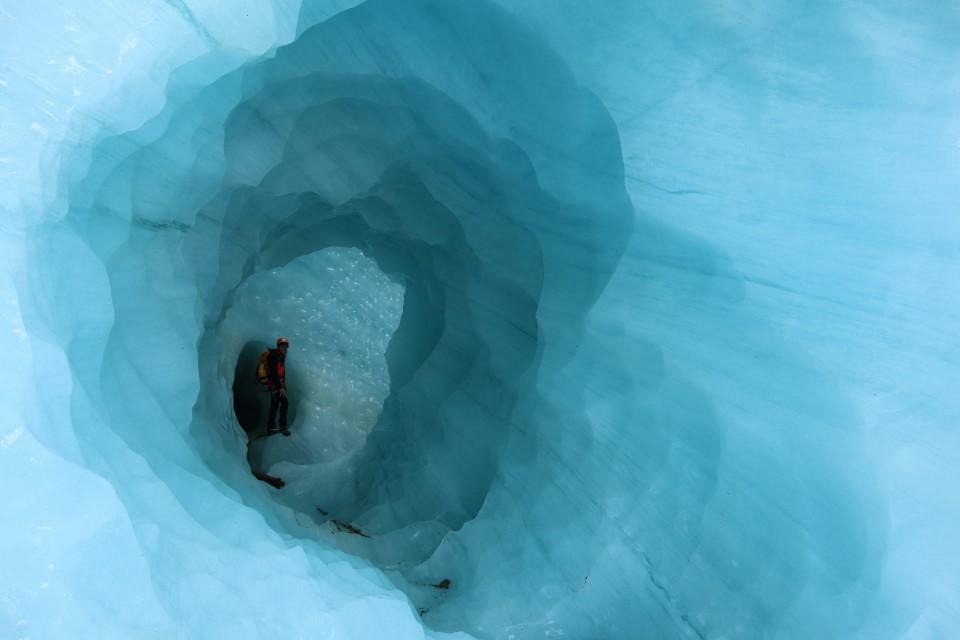
Practical Information on Crystal Ice Caves in Iceland
What are ice caves in Iceland?
Ice caves in Iceland are natural formations within glaciers, where meltwater carves out caverns, revealing a world of blue ice and stunning structures. They offer a glimpse into the dynamic processes of glaciers and are known for their breathtaking beauty.
What are Crystal Ice Caves?
These caves are characterized by their stunning, transparent, blue ice, which often appears crystal-like, creating a mesmerizing, otherworldly environment. The ice's clarity, transparency and deep blue hue are due to the high density and low air content of the glacial ice. These caves offer a rare glimpse into the heart of glaciers, providing an extraordinary experience of exploring a world of frozen beauty.
How are ice caves in Iceland formed?
Ice caves in Iceland are formed through a combination of geological and meteorological processes. Glacial ice caves are typically created when meltwater from the glacier's surface finds its way down through crevasses and begins to melt channels within the ice. Over time, as the meltwater flows, it carves out large tunnels and caves under the glacier.
When is the best time to visit ice caves in Iceland?
The prime time to visit ice caves in Iceland is during the colder months, from November to March. During this period, the lower temperatures make the ice more stable, reducing the risk of melting and collapse, which can occur in the warmer months, ensuring a safer experience.
Where are the most popular ice caves located in Iceland?
The most famous ice caves are found within the Myrdalsjökull and Vatnajökull glaciers. These locations are renowned for their accessibility and the stunning blue ice found within.
What safety precautions should be taken when visiting ice caves in Iceland?
Essential safety precautions include going on guided tours with experienced professionals, wearing suitable protective gear like helmets and crampons, and following all instructions provided by tour guides. It's also important to check the weather forecast and avoid venturing into ice caves during heavy rain or warm spells, which can cause flooding and instability in the caves.
Are guided tours available for exploring ice caves in Iceland?
Yes, there are numerous guided tours available, which are not only advisable but often the only permitted way to visit ice caves. These tours provide the necessary equipment and the expertise of guides familiar with the caves' structures and conditions.
Can I visit an ice cave without a tour?
Visiting an ice cave in Iceland without a guided tour is not recommended due to safety concerns. Glaciers can be treacherous, with hidden crevasses and unstable ice conditions that require expert navigation and specialized equipment. Guided tours provide the necessary safety gear, knowledge of the current conditions of the caves, and expertise in glacier hiking. For a safe and informed experience, it is advisable to explore these natural wonders with a professional guide.
What should I wear when visiting an ice cave in Iceland?
Appropriate attire for ice cave visits includes layers of thermal clothing, waterproof outer layers, insulated winter boots, gloves, and a hat. The layering allows for adjusting to the cold environment within the caves while ensuring comfort and mobility.
Can ice caves in Iceland be accessed during the summer?
Access to ice caves during the summer is often restricted due to the increased risk of meltwater and instability within the caves. However, some particularly stable ice caves may remain accessible, but always with a professional guide.
Are there any age requirements for ice cave tours in Iceland?
Most ice cave tours in Iceland have age restrictions, typically setting a lower limit for children due to physical demands and safety concerns. It's common for tour operators to set a minimum age between 8 and 10 years old, but this can vary, so it's best to check with individual tour providers.
Keep me informed about the Icelandic Mountain Guides Blog
Outdoor adventure in Iceland is our specialty. Subscribe to our free monthly newsletter to learn when to go, what to do and where to have the best adventures in Iceland.
Related Blog Posts
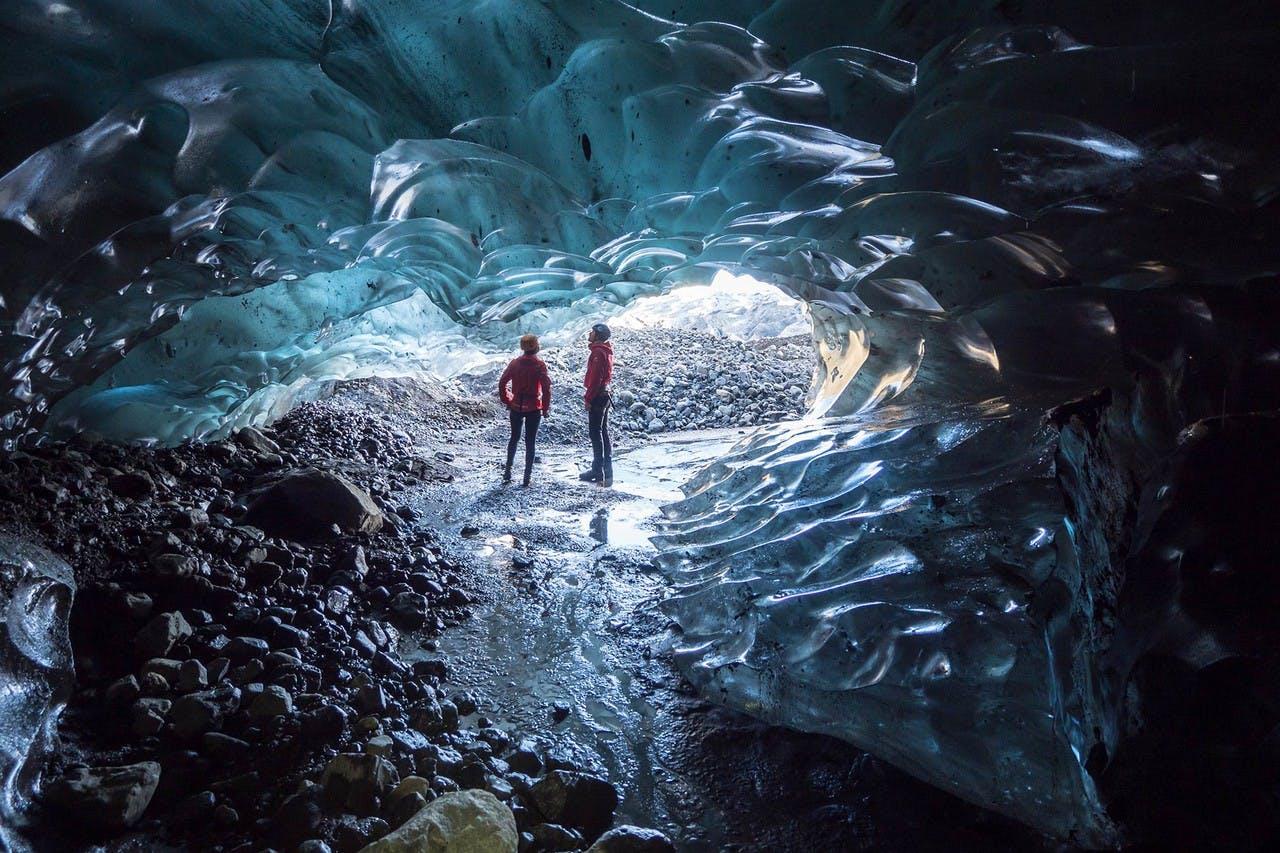
The Crystal Ice Cave in Iceland: Avoid the Crowds & Go Here Instead
2018-10-16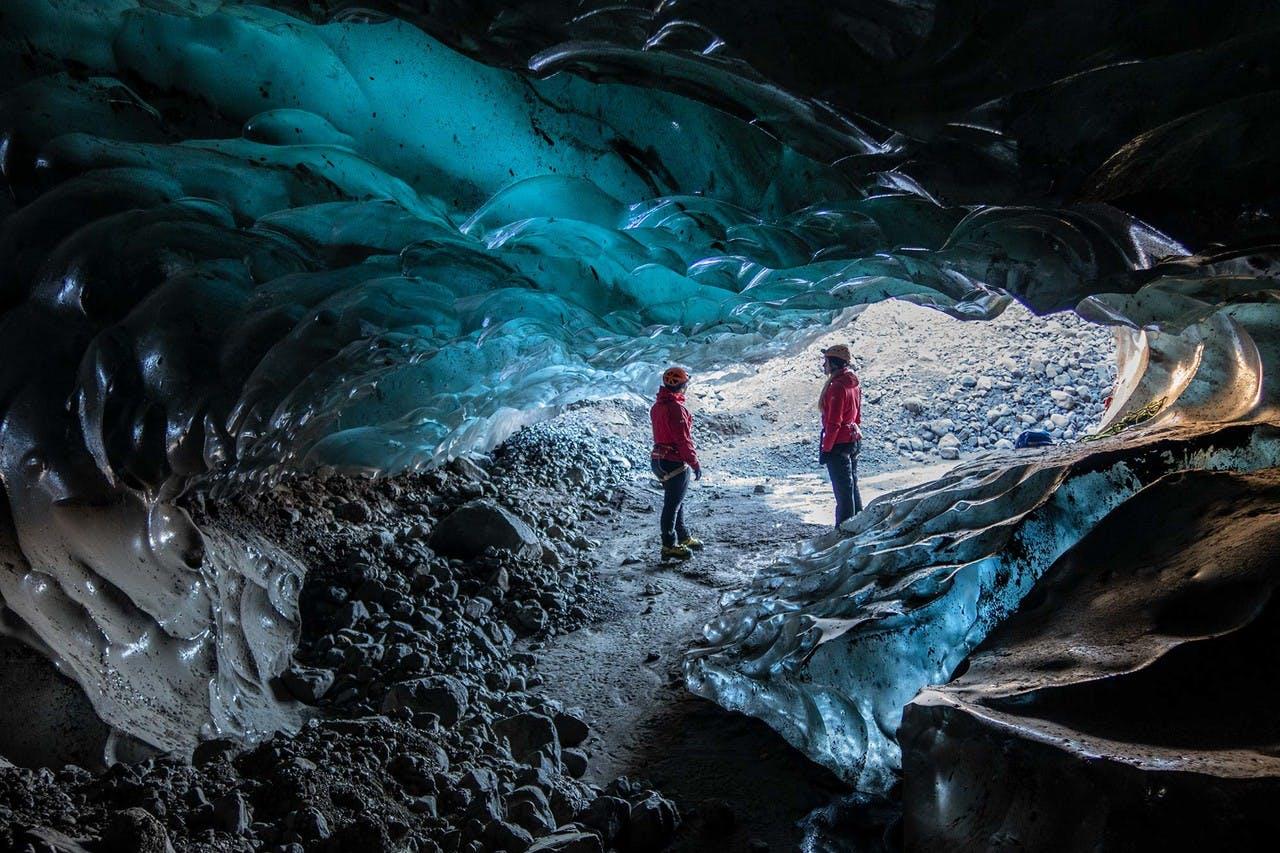
Ice Caves - A Deeper Glance at One of Iceland’s Most Beautiful Sights
2019-01-18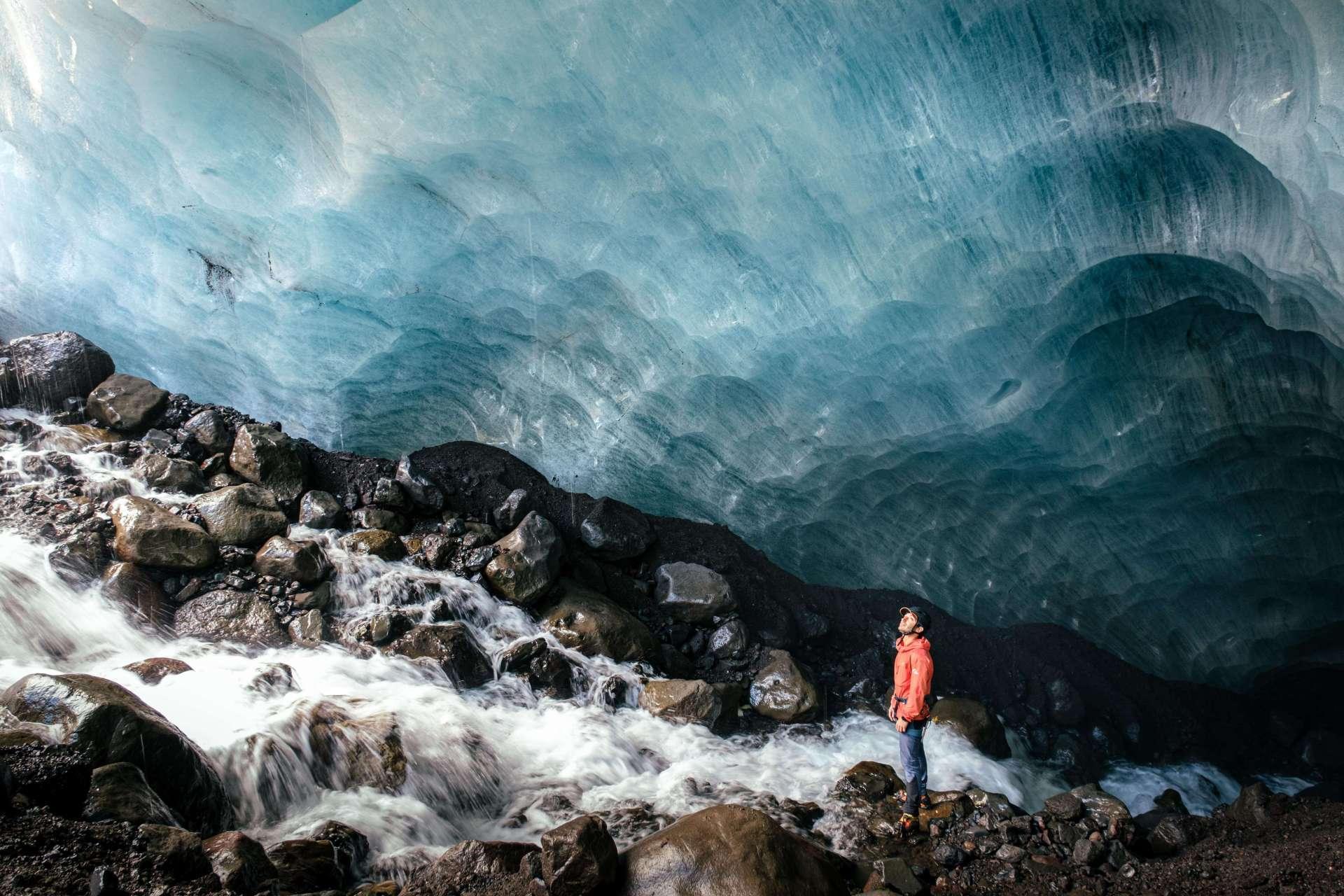
The Ice Caves of Iceland - Take on the Adventure
2021-09-08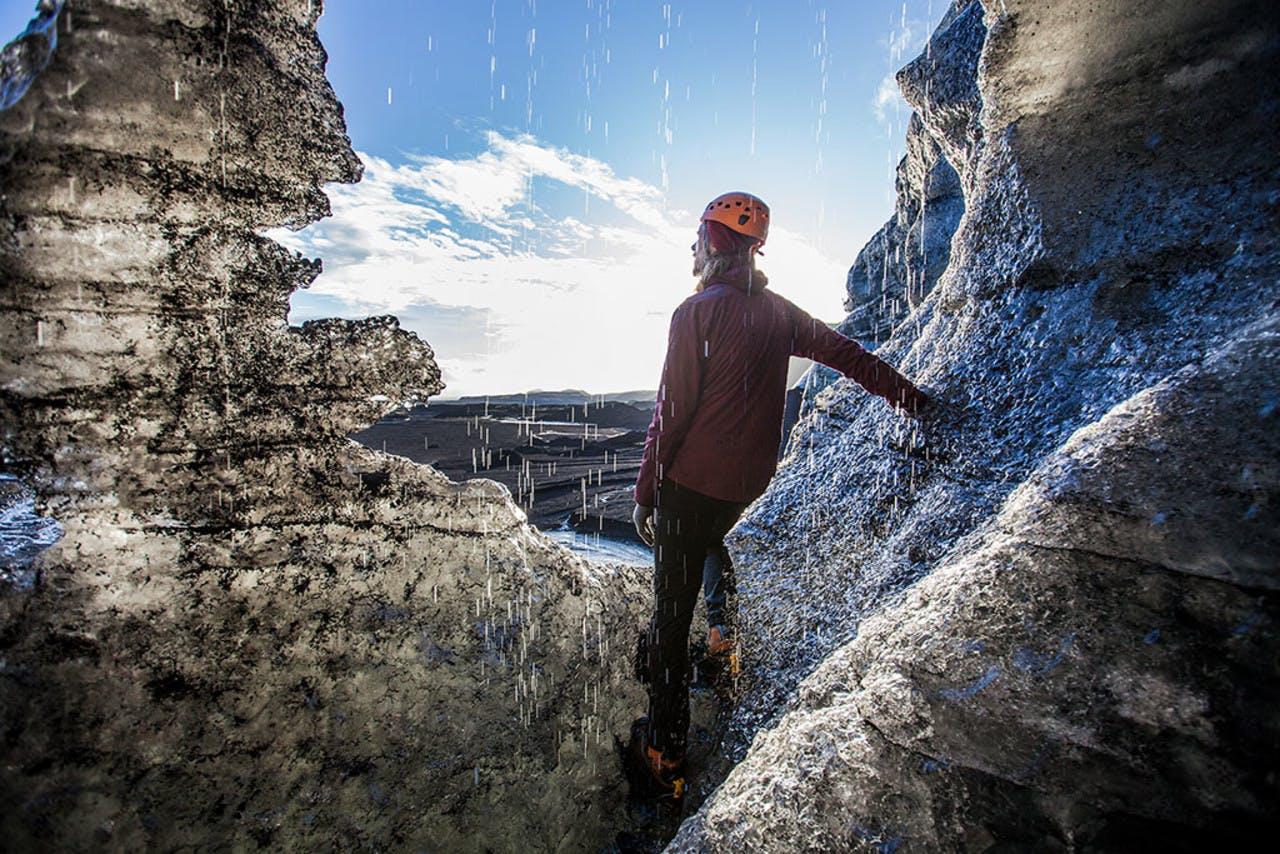
An Enchanted Ice Cave in Iceland
2018-03-02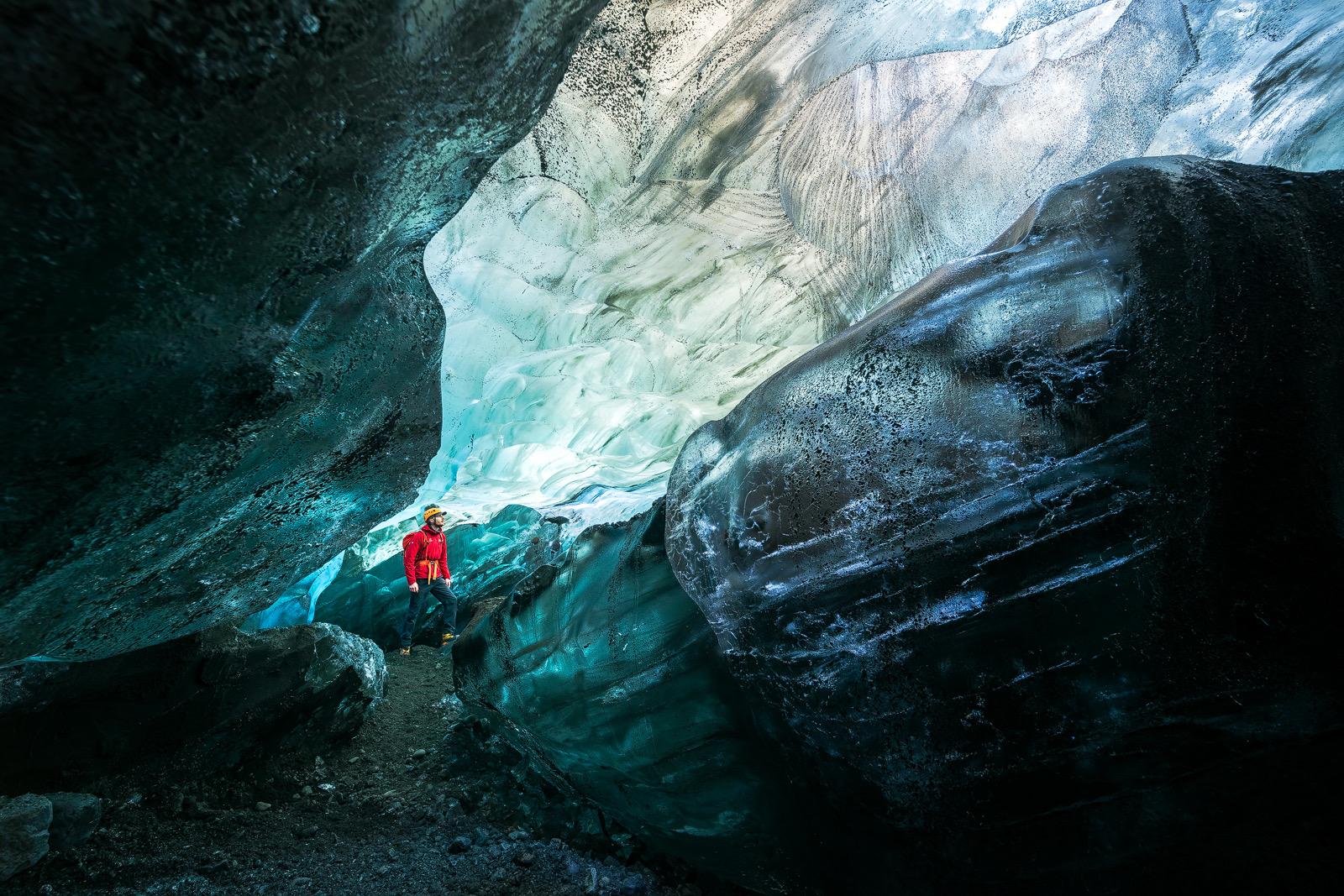
Your guide to the Aurora Ice Cave Tour in Iceland
2022-11-08
